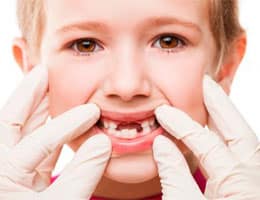 The etymological origin of dentition is found in the Latin word dentitio . The term allows us to name the process of teething (when teeth begin to emerge). The period in which teeth appear in the mouth is also called dentition.
The etymological origin of dentition is found in the Latin word dentitio . The term allows us to name the process of teething (when teeth begin to emerge). The period in which teeth appear in the mouth is also called dentition.
For example: “My baby is a little upset because he started teething” , “Some professionals claim that pacifiers can affect children's normal teething” , “ Calcium is important in teething” .
Dentition is determined by the development of the teeth and their location in the mouth . Each species has a certain number of teeth, which are generally of different types (molars, canines, etc.). Some animals, however, have only one type of teeth.
Humans and most other mammals develop two dentitions throughout their lives: the deciduous dentition (also called primary dentition , deciduous dentition , or baby dentition ) and the permanent dentition ( secondary or second dentition). teething ).
Temporary or baby teeth emerge in the embryonic stage, but only become visible in childhood . Once these teeth fall out, permanent teeth begin to emerge. Thus, the deciduous dentition is followed by the second dentition. If a permanent tooth, for some reason, becomes detached from the mouth, another will no longer appear to replace it.
In general, primary teething causes discomfort to the baby and even some pain . Although teething usually begins at six months of age, the range of possibilities covers the period between three months and one year. The order in which each type of deciduous tooth emerges is the same for all children, and the groups are as follows: central incisors, lateral incisors, canines, first molars and second molars.
The technical terms for teeth eruption and loss are eruption and loss , respectively. The timing of loss is also variable although, as with eruption, there are typical age ranges in which it occurs. In almost all children, the eruption of teeth has lateral symmetry, that is, each type appears on the left and on the right at the same time.
 Regarding the upper teeth , the first to emerge is the central incisor , starting at eight months, and the last is the second molar , starting at twenty-five months; Their loss occurs at six and ten years, respectively. In the case of the lower teeth , the first is the central incisor , at approximately six months, and the last is the second molar , at twenty-three months, with their respective falls at ten and thirty-one months.
Regarding the upper teeth , the first to emerge is the central incisor , starting at eight months, and the last is the second molar , starting at twenty-five months; Their loss occurs at six and ten years, respectively. In the case of the lower teeth , the first is the central incisor , at approximately six months, and the last is the second molar , at twenty-three months, with their respective falls at ten and thirty-one months.
To minimize teething disorders in babies, there are various practices, some of which are listed below:
* clean your face frequently, wiping a soft cloth around your mouth to remove drool before it starts to irritate your skin;
* rub your gums with a finger for a while, until you notice that they have calmed down;
* give him a toy that he can bite. Let's not forget that the object must be large enough so that the child cannot swallow or choke on it. If we buy specific rubber rings for this, it is recommended to avoid those that are filled with liquid, as they can puncture and leak into the inside of the mouth;
* Babies older than six months can be given ibuprofen and paracetamol, although it is always advisable to consult with the pediatrician first so as not to exceed the dose .
